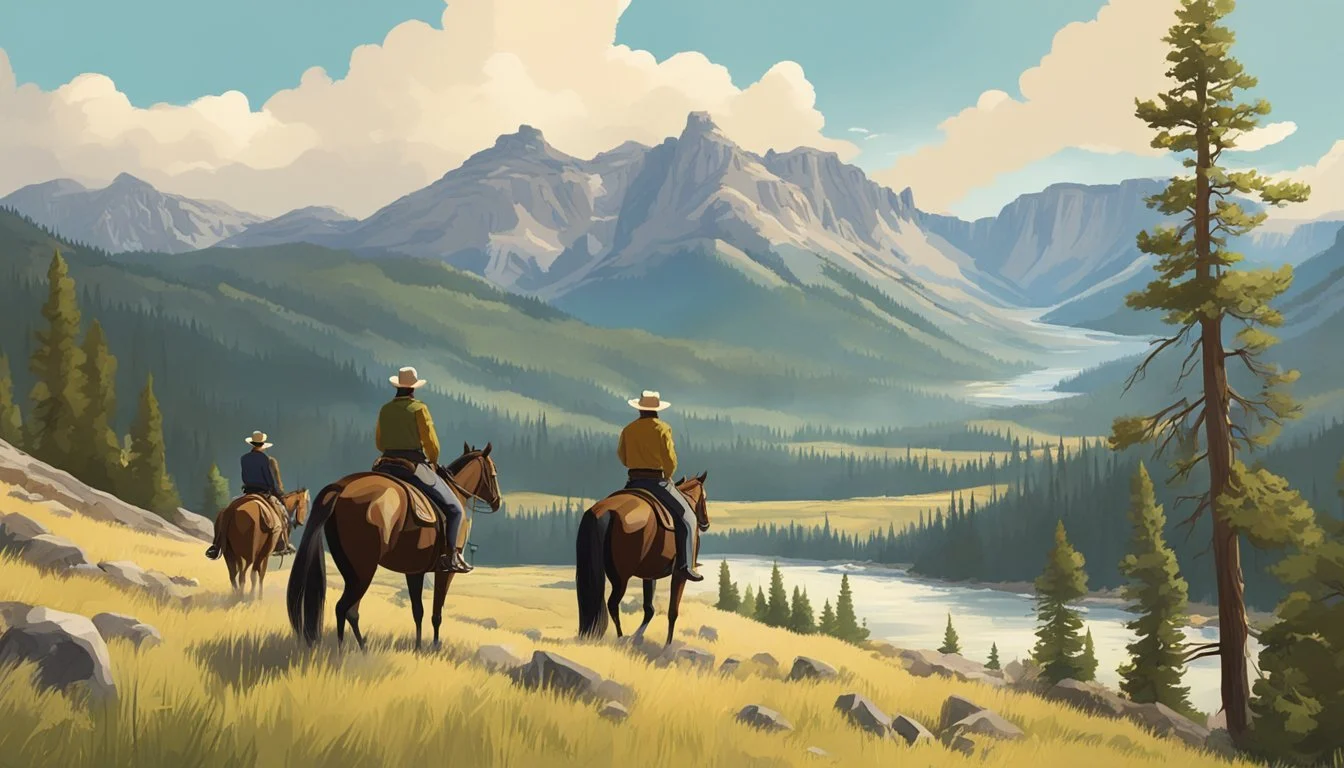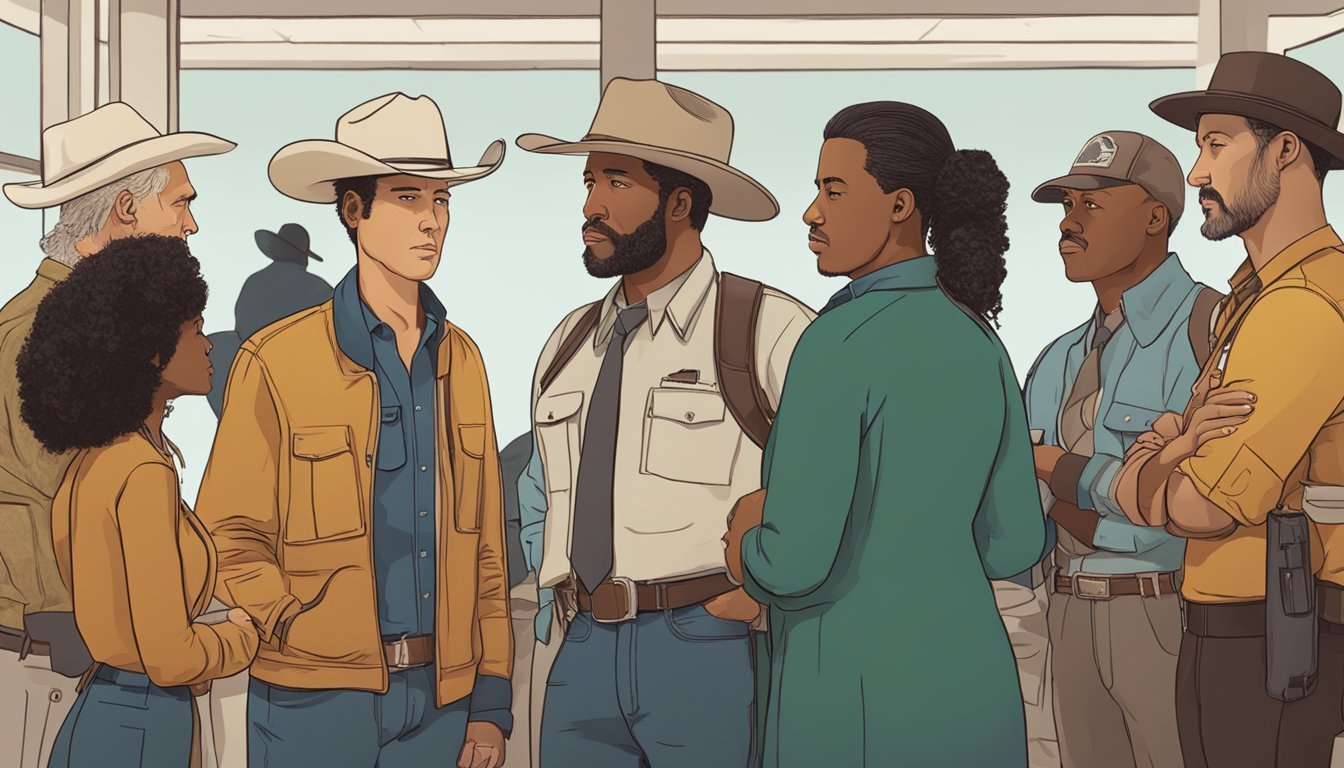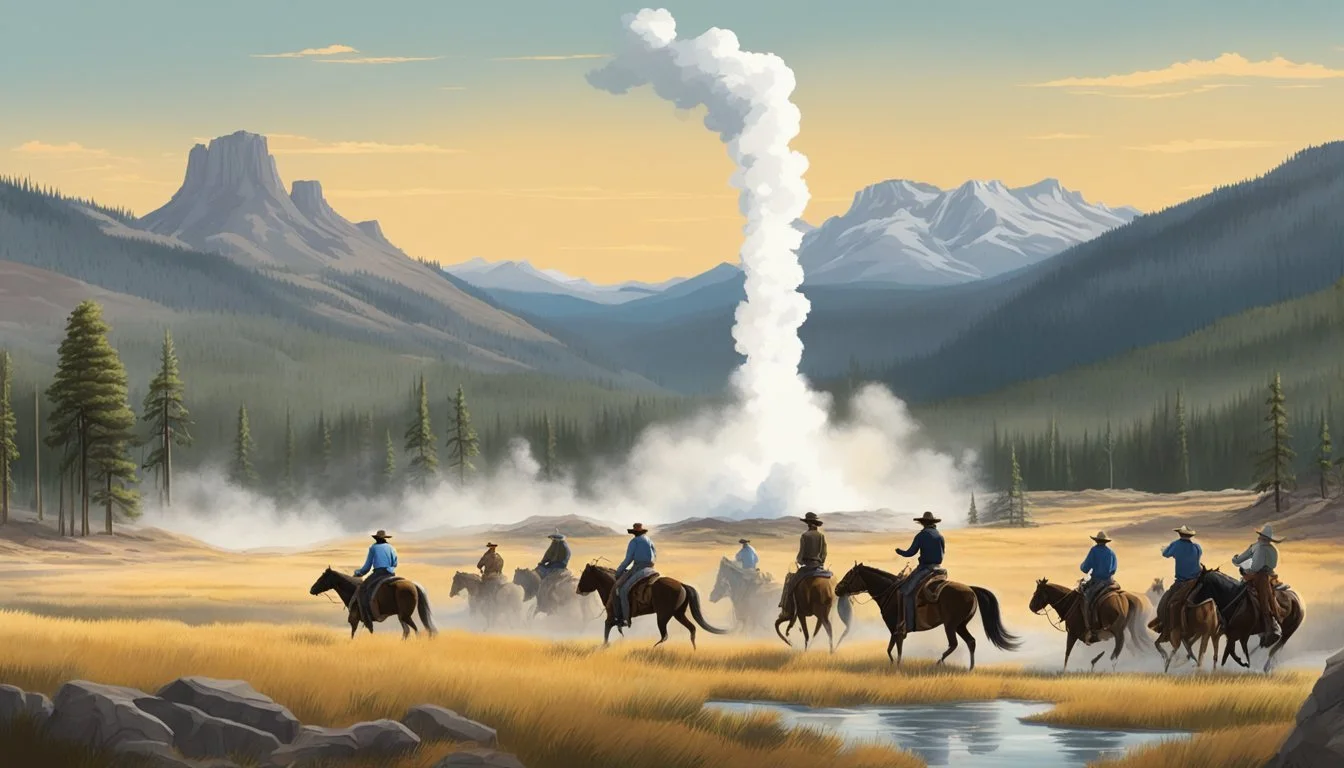Discover the Hidden Secrets of the Location of Yellowstone – Nature’s Masterpiece!
Yellowstone National Park spans across three states in the northwest United States. While its official address is in Wyoming, the park actually extends into Montana and Idaho as well. The majority of Yellowstone (96%) lies within Wyoming's borders, with a small portion (3%) in Montana to the north and northwest, and the remainder in Idaho.
Covering an expansive 3,472 square miles, Yellowstone is renowned for its diverse landscapes and unique geological features. The park's vast territory encompasses a variety of ecosystems, from pristine forests and rugged mountains to sprawling grasslands and geothermal wonders. This varied terrain provides habitats for an incredible array of wildlife, including grizzly bears, wolves, bison, and elk.
Yellowstone's location in the heart of the American West makes it a popular destination for nature enthusiasts and adventure seekers. Its central position allows visitors to explore not only the park itself but also the surrounding regions of Wyoming, Montana, and Idaho. The park's strategic location has contributed to its status as one of the most famous and visited national parks in the United States.
Geographical Location
Yellowstone National Park spans across three states in the northwestern United States. Its vast landscape encompasses diverse geological features, including geothermal wonders and iconic landmarks.
Overview of Yellowstone
Yellowstone National Park covers 3,472 square miles of rugged wilderness. The park sits atop a volcanic hotspot, resulting in its unique geological characteristics. Yellowstone's terrain varies from dense forests to open meadows, with elevations ranging from 5,282 to 11,358 feet above sea level.
The park's geography is shaped by past volcanic activity, glaciation, and erosion. This has created a landscape of canyons, rivers, and mountains that attract millions of visitors each year.
States and Regions
Yellowstone spans three states: Wyoming, Montana, and Idaho. The majority of the park (96%) lies within Wyoming's borders. Montana contains 3% of the park in its southern region, while Idaho claims 1% in its eastern portion.
The park is situated in the Rocky Mountains, specifically in the Greater Yellowstone Ecosystem. This ecosystem extends beyond the park's boundaries, encompassing surrounding national forests and wildlife refuges.
Yellowstone's location in the intermountain west contributes to its continental climate, characterized by cold winters and mild summers.
Notable Landmarks
Yellowstone Lake, the largest high-elevation lake in North America, dominates the park's center. Covering 136 square miles, it's a focal point for many visitors and crucial to the park's ecosystem.
The Grand Canyon of the Yellowstone, carved by the Yellowstone River, showcases colorful rock walls and dramatic waterfalls. It stretches for 24 miles, reaching depths up to 1,200 feet.
Old Faithful, the park's most famous geyser, erupts regularly in the Upper Geyser Basin. This area contains the highest concentration of geothermal features in the world.
To the south, the Teton Range in Grand Teton National Park provides a stunning backdrop, visible from parts of Yellowstone.
History and Significance
Yellowstone's rich history spans thousands of years, from ancient geological processes to its groundbreaking designation as the world's first national park. The area's unique features have drawn humans for millennia, shaping both the landscape and its cultural significance.
Formation and Development
Yellowstone's dramatic landscape formed through volcanic and seismic activity over millions of years. A massive hotspot beneath the Earth's crust created the region's distinctive features. Eruptions and lava flows sculpted the terrain, while glaciers carved out valleys and lakes.
Native American tribes inhabited the area for at least 11,000 years. They used the land for hunting, gathering, and spiritual practices. The Tukudika, also known as Sheep Eaters, were among the most well-known groups to call Yellowstone home.
European Americans began exploring the region in the early 19th century. Their accounts of Yellowstone's wonders sparked public interest and scientific curiosity.
Designation as National Park
Yellowstone became the world's first national park on March 1, 1872. U.S. President Ulysses S. Grant signed the Yellowstone National Park Protection Act into law.
This groundbreaking legislation set aside over 2 million acres of public land for preservation and enjoyment. It marked a pivotal moment in conservation history, inspiring the creation of national parks worldwide.
The park's establishment faced challenges, including conflicts with Native American tribes who were displaced from their ancestral lands. Over time, management practices evolved to better protect the park's resources and wildlife.
In 1978, UNESCO designated Yellowstone as a World Heritage Site, recognizing its global importance. Today, it remains a symbol of natural beauty and conservation efforts.
Ecology and Environment
Yellowstone's unique ecology encompasses diverse wildlife, geothermal wonders, and pristine ecosystems. The park forms the heart of one of Earth's largest intact temperate-zone environments.
Flora and Fauna
Yellowstone hosts an abundance of plant and animal species. Over 1,350 native plants thrive in the park's varied habitats. The region is home to iconic megafauna like bison, elk, and grizzly bears.
Bison herds, numbering around 5,000, roam the grasslands. Elk populations fluctuate between 10,000-20,000 animals. Grizzly bears and wolves, once extirpated, have been successfully reintroduced.
The park provides crucial habitat for threatened species such as Canada lynx and wolverines. Yellowstone's waters support native fish like cutthroat trout.
Geothermal Features
Yellowstone contains about half of the world's active geysers. Over 10,000 geothermal features dot the landscape, including hot springs, mud pots, and fumaroles.
Old Faithful, erupting approximately every 90 minutes, is the most famous geyser. The Grand Prismatic Spring, with its vivid colors, is the largest hot spring in the U.S.
These features create unique microhabitats for thermophilic bacteria and other heat-loving organisms. Scientists study these extremophiles for insights into early life on Earth.
Ecosystems and Conservation
The Greater Yellowstone Ecosystem spans 22 million acres across Wyoming, Montana, and Idaho. It's one of the largest nearly intact temperate-zone ecosystems on the planet.
Yellowstone's varied landscapes include:
Alpine tundra
Subalpine forests
Grasslands
Riparian areas
Conservation efforts focus on maintaining ecosystem health and biodiversity. Challenges include climate change impacts, invasive species, and balancing visitor use with resource protection.
The park serves as a living laboratory for ecological research. Long-term studies track wolf-prey dynamics, fire ecology, and geothermal activity.
Geological Features
Yellowstone National Park's landscape is shaped by its dynamic geological history, featuring a massive caldera and abundant hydrothermal activity. These unique features result from the park's location atop a volcanic hotspot.
Yellowstone Caldera and Volcanism
The Yellowstone Caldera, a massive volcanic crater, dominates the park's geology. Formed by a series of eruptions over the past 2.1 million years, it spans approximately 30 by 45 miles. The most recent major eruption occurred 631,000 years ago, ejecting 240 cubic miles of material.
Yellowstone sits atop a hotspot, a plume of hot magma rising from deep within the Earth. This hotspot fuels the park's volcanic activity and drives its geothermal features. The area experiences frequent earthquakes, with an average of 1,000 to 3,000 recorded annually.
The U.S. Geological Survey closely monitors Yellowstone's volcanic activity through the Yellowstone Volcano Observatory. This monitoring helps scientists better understand the park's geological processes and assess potential risks.
Hydrothermal Attractions
Yellowstone boasts over 10,000 hydrothermal features, including geysers, hot springs, fumaroles, and mudpots. These attractions result from groundwater interacting with the heat generated by the underlying magma chamber.
The park contains approximately 500 geysers, representing half of all known geysers worldwide. Old Faithful, erupting roughly every 90 minutes, is the most famous. The Norris Geyser Basin, known for its acidic features and frequent changes, is the hottest and most dynamic geyser basin in Yellowstone.
Hot springs in the park showcase vibrant colors due to thermophilic bacteria thriving in the extreme conditions. Fumaroles, or steam vents, emit hot gases and vapors. Mudpots, where hot water mixes with clay and volcanic ash, create bubbling mud pools with unique textures and sounds.
Visitor Experience
Yellowstone National Park offers diverse activities, educational opportunities, and amenities to enhance visitors' enjoyment. The park caters to various interests and abilities, ensuring memorable experiences for all.
Recreational Activities
Fishing enthusiasts can cast lines in Yellowstone's pristine waters, adhering to specific regulations to protect native species. Hiking trails cater to all skill levels, from easy boardwalks to challenging backcountry routes.
Camping options range from developed campgrounds to remote wilderness sites. Boating is permitted on select lakes and rivers, allowing visitors to explore the park from a unique perspective.
Visitors can obtain fishing permits, trail maps, and camping information at park entrance stations or visitor centers. The park's official app provides up-to-date details on recreational opportunities and current conditions.
Educational Centers and Museums
Yellowstone's visitor centers serve as hubs for learning about the park's geology, wildlife, and history. The Albright Visitor Center in Mammoth Hot Springs features exhibits on park wildlife and Yellowstone's rich past.
Museums throughout the park showcase artifacts and interactive displays. Ranger-led programs offer insights into Yellowstone's unique features and ecosystems.
Educational materials are available in various formats, including Braille and audio descriptions, to accommodate diverse learning needs. The park's trip planner helps visitors make the most of educational opportunities during their stay.
Amenities and Accessibility
Yellowstone prioritizes accessibility, offering wheelchair-friendly trails, accessible lodging options, and specially designed facilities. The Grand Loop Road provides a scenic drive connecting major park attractions.
Lodging ranges from rustic cabins to full-service hotels, catering to different preferences and budgets. Dining facilities, gift shops, and general stores are conveniently located throughout the park.
Text-only versions of park information are available for visitors with visual impairments. The park continually improves its infrastructure to enhance the visitor experience while preserving natural resources.
Protection and Management
Yellowstone National Park employs comprehensive strategies to safeguard its unique ecosystems and natural wonders. The National Park Service oversees conservation efforts and visitor management to ensure the park's long-term preservation.
Wildlife and Habitat Preservation
The park's wildlife protection programs focus on maintaining healthy populations of native species. Bison management is a key priority, with efforts to balance conservation and prevent conflicts with neighboring lands. Bear management protocols aim to reduce human-wildlife interactions and protect both visitors and bears.
Habitat preservation includes restoring native plant communities and controlling invasive species. The park also manages wildfires to maintain natural ecological processes. Strict regulations protect sensitive areas from human disturbance.
Natural Resource Management
Yellowstone's geothermal features receive special protection to prevent damage from visitor activities. The park closely monitors water quality and quantity in its rivers and lakes. Fishing Bridge, a popular spot, has implemented catch-and-release policies to protect native fish populations.
Climate change impacts are closely studied, with adaptive management strategies in place. The park conducts ongoing research to inform conservation decisions. Visitor education programs promote responsible behavior and environmental stewardship.
Air and water quality monitoring helps detect and address potential threats to the park's ecosystems. Partnerships with surrounding communities and agencies support broader regional conservation efforts.
Cultural Impact
Yellowstone has profoundly influenced American culture, reshaping perceptions of the West and Native American communities. The show's popularity has sparked renewed interest in Western themes and lifestyles.
Representation in Media and Arts
Yellowstone, created by Taylor Sheridan, has redefined the modern Western genre. The series showcases stunning landscapes of Montana and Utah, with many scenes filmed at Chief Joseph Ranch near Darby. Kevin Costner's portrayal of John Dutton has become iconic, drawing comparisons to classic Western heroes.
The show's depiction of Native American characters, particularly those from the Crow Indian Reservation, has garnered attention. It offers more nuanced portrayals than traditional Westerns, though some critics argue for even greater depth and authenticity.
Yellowstone's success has inspired a wave of Western-themed content across various media platforms. Its visual style and storytelling approach have influenced other TV series and films set in the American West.
Impact on Local Communities
Yellowstone's popularity has significantly boosted tourism in Montana and surrounding areas. Fans flock to filming locations, particularly the Chief Joseph Ranch, which has become a major attraction.
The increased tourism has brought economic benefits to local communities like Darby. Hotels, restaurants, and shops have seen a surge in business from Yellowstone enthusiasts.
The show has also rekindled interest in ranch life and Western fashion. Cowboy boots, hats, and other Western wear have experienced a resurgence in popularity across the country.
Yellowstone's portrayal of conflicts between ranchers, developers, and Native American tribes has sparked discussions about land use and conservation in the West. These debates often mirror real-life issues faced by communities in Montana and neighboring states.
Travel Planning
Effective travel planning is crucial for a successful Yellowstone adventure. Visitors should consider timing, accommodations, and nearby attractions to make the most of their trip.
Best Times to Visit
Summer is peak season in Yellowstone, offering warm weather and full access to park facilities. June through August sees the largest crowds and highest prices. Spring and fall provide milder temperatures and fewer visitors. May and September are ideal for wildlife viewing and scenic beauty.
Winter in Yellowstone offers a unique experience with snow-covered landscapes and opportunities for activities like cross-country skiing and snowmobiling. However, many roads and facilities close during this season.
For those seeking a balance between good weather and smaller crowds, late May or early September are excellent choices.
Accommodations and Reservations
Lodging options within Yellowstone include hotels, cabins, and campgrounds. Canyon Village and Old Faithful area offer various accommodation types. Reservations are essential, especially during peak season.
Book accommodations well in advance, often up to a year for summer visits. Campgrounds fill quickly, with some operating on a first-come, first-served basis.
Outside the park, West Yellowstone, Montana provides numerous lodging options. Consider staying in nearby towns like Jackson, Wyoming or Gardiner, Montana for additional choices.
Nearby Attractions and Cities
Several cities near Yellowstone offer attractions and serve as gateways to the park. West Yellowstone, Montana is the closest, providing easy access to park entrances.
Billings, Montana, the largest city in the region, offers urban amenities and cultural attractions. Missoula, Montana provides a vibrant downtown and outdoor recreation opportunities.
Jackson, Wyoming serves as a popular base for exploring both Yellowstone and Grand Teton National Parks. The town features art galleries, restaurants, and ski resorts.
Cody, Wyoming, to the east, boasts the Buffalo Bill Center of the West museum complex. Idaho Falls, Idaho offers a charming riverfront and serves as a convenient stopover for park visitors.
Practical Information
Yellowstone National Park spans a vast area across three states and contains diverse landscapes and geological features. Its size and location contribute to unique weather patterns and environmental conditions.
Geographical Measurements
Yellowstone National Park covers 3,472 square miles (8,991 square kilometers) of land. The park encompasses 2,221,766 acres, making it one of the largest national parks in the lower 48 states. Elevations in Yellowstone range from 5,282 feet (1,610 meters) to 11,358 feet (3,462 meters) above sea level.
The park is home to the Grand Canyon of the Yellowstone River, which stretches for 20 miles (32 kilometers) and reaches depths of up to 1,200 feet (366 meters). Yellowstone also boasts the world's largest concentration of active geysers, with over 500 geysers scattered throughout the park.
Weather and Environmental Conditions
Yellowstone experiences a subarctic climate with long, cold winters and short, cool summers. Average temperatures range from 0°F (-18°C) in winter to 70°F (21°C) in summer. The park receives an average of 150 inches (381 cm) of snowfall annually, with some areas receiving up to 200 inches (508 cm).
The park's geothermal features create unique microclimates. These areas can be significantly warmer than surrounding regions due to the heat generated by underground volcanic activity. Visitors should be prepared for rapid weather changes and pack appropriate clothing for various conditions.
Wildlife in Yellowstone adapts to these environmental conditions. Many animals, such as bison and elk, migrate to lower elevations during winter months to find food and escape harsh weather.




